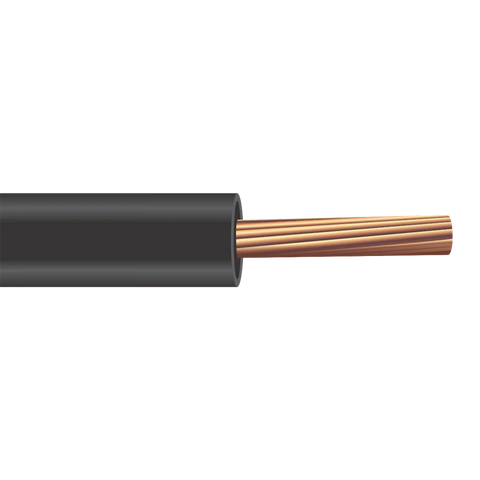High-Temperature Wire Explained In Simple Words
Defining hi-temp wire
High-temperature wire often referred simply as high-temp wire, is a cable with an operating temperature of 150°C or higher. Some manufacturers refer to cables with an operating temperature of 125°C and higher as high-temperature wire, though such distinction is less common because 125°C is still a relatively common operating temperature.
Referring to cables with a maximum operating temperature of 90°C and above is a mistake, as temperature ratings between 90°C and 105°C are the most common in the wire and cable industry. These temperature ratings indicate average heat resistance.
Heat-Resistant Wire vs. High-Temperature Wire
High-temperature cable means that an operating temperature is at least 150°C. Heat resistance means that the shielding and insulation of the wire can withstand heat. A high-temp wire is always heat-resistant, so the terms can be used interchangeably even though they have slightly different meanings.
What is the operating temperature of a cable?
The operating temperature is a temperature at which the cable can typically operate for a long time. Wire and cable manufacturers sometimes state a maximum temperature higher than the operating one. This is the temperature at which the cable can operate briefly without being damaged. The two should not be confused.
Common Wire Temperature Rating Of Popular Wire and Cable (Indicated for Dry Conditions)
- 75°C - THW
- 90°C - THHN, THWN-2, XHHW-2, XLP-USE 2 RHH RHW-2, UF-B, Romex NM-B, SER, SEU, aluminum MC, aluminum URD, Type W, Type G-GC, DLO, SOOW
- 105°C - MTW, PV Wire, Hook-Up Wire, Welding Cable, Battery Cable, Flat Festoon Cable, SEOOW
- 125°C - Jumper Cable, Type P Marine Cable
The temperature ratings described above are standard. The temperature characteristics of cables can be enhanced with the help of insulations with a higher operating temperature and/or modified cable conductors. This is a common practice for mining, industrial, and marine cables.
When should you use a high-temperature wire?
A heat-resistant wire is a cable with a continuous operating temperature of 150°C and above that is used in environments exposed to the impact of heat. Some of these are:
- Industrial applications: Metal Melting Furnaces For Casting Operations, Electric Arc Steelmaking, Oil Refineries, Drilling Rigs, Power Plants, Ironworks Plants, Plastic Plants, Glass Plants, Other Metal Plants, Welding Machines Operated By Robots, Robotic Plants, Car Plants, Industrial Ovens
- Utility applications: Utility Power Stations
- Military Applications: Aircraft, Missiles, Navy Ships.
- Commercial and Residential Applications: Commercial and Domestic Ovens, Other Cooking Appliance, Some Medical Equipment in Hospitals, Commercial and Residential Appliances, Clothing Dryers, Lighting Fixtures. The hi-temp wire used in ovens is referred to as an oven cord.
Hi-temp wire can have very different functionality. It can be used as a power cable, a control cable, an instrumentation cable, a motor lead wire, and a fixture wire.
Types Of Conductors For High Temp Wire
- Tinned Copper - a budget-friendly conductor variation that offers protection in temperatures up to 180°C
- Nickel-plated Copper - a more expensive and more heat-resistant conductor able to sustain temperatures up to 450°C
- Nickel conductors are used in thermocouple wire with a temperature rating above 450°C. This is the rarest type of high-temp wire.
High-temp wire does not feature aluminum conductors as heat-dense applications require conductivity of copper or nickel.
Types Of High Temperature Wire Insulation
- Silicone/ silicone rubber - operating temperature of 180ºC. The subtypes are EPDM and SRK.
- Teflon /TFE/ PTFE/ FEP - operating temperature of 250 ºC.
- Mica Glass -operating temperature of 450 ºC
High-Temperature Wire vs. Thermocouple Wire
Thermocouple wire is a subtype of high-temperature wire used to measure temperatures. It has the highest temperature rating among high-temperature cables (up to 1300 ºC in some applications. Aside from measuring temperature, it does not serve any industrial, commercial, or residential purposes.
Hi-Temp Wire Sold By Nassau National Cable
SRML SEWF-2 UL 3070 High-Temperature Motor Lead Wire, SRML Tinned Copper 600V High-Temperature Motor Lead Wire, and SRML UL 3231 High-Temperature Motor Lead Wire with a silicone rubber insulation and a fiberglass braid jacket are suitable for temperatures up to 150°C. SRML SF-2 Strands High Temperature Lead Wire has a 200°C temperature rate with similar characteristics.
TYPE E M16878/4 PTFE High-Temperature Lead Wire with a premium silver-plated copper conductor and PTFE insulation can be used in temperatures up to 200°C.
MG Duraflex UL 5400 550°C High-Temperature Wire with a nickel-plated copper conductor, mica glass insulation, and a fiberglass braid jacket is perfect for extreme conditions due to its temperature rate of 550°C.
MG UL 5335/5107 450°C High-Temperature Wire has a nickel-plated copper conductor, mica glass insulation, and a fiberglass braid jacket with an additional layer of medical silicone with a temperature rate of 450°C.
Hook-Up Silicone Rubber UL 3213 600V High-Temperature Wire has a tinned copper conductor and silicone rubber insulation without braids. It performs well in temperatures up to 150°C.
High Temperature Stranded UL 5256/5196 250°C TGGT Wire has a nickel-coated copper conductor, PTFE Tape/Fiberglass Serving/Fiberglass braid insulation, and a braided-glass yarn jacket. It is suitable for temperatures up to 250°C.



















